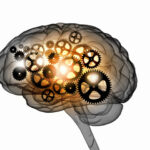What is Bipolar Disorder?
Bipolar Disorder (Manic-Depression) is a brain disorder that causes unusual changes in mood, energy, behavior, and the ability to accomplish daily responsibilities. These symptoms can eventually cause relationships to fall apart, poor performance at school and work, and can even cause suicide. These severe symptoms of bipolar disorder are different than the normal ups and downs that one goes through every now and then. Although bipolar disorder symptoms are severe, it can be treated, and people with this condition can live normal productive lives. Bipolar disorder (Manic-Depression) is a condition that is usually found in adolescence and adults, but the symptoms can begin in young children. Bipolar disorder is a long-term illness that requires careful treatment through out one’s life.
What are the Symptoms of Bipolar Disorder?
Symptoms for bipolar disorder are a combination of both manic and depressive symptoms. These symptoms will include, severe mood swings (from extreme happiness, silliness, aggressiveness, and anger to frequent crying, sadness, irritability, and depression). Symptoms also include, suicidal thoughts or extreme highs in self-esteem, an unusual increase or decrease in energy, a change in eating or sleeping patterns, and an increase in risky behavior (such as, abusing drugs and alcohol, and participating in reckless driving or sexual promiscuity). Symptoms may also include, being easily distractible, talking very fast, jumping from one idea or thought to the next, and frequent complaining of physical illness. Some people may experience symptoms of both mania and depression at the same time, and this is called a mixed state. At first, these symptoms may not seem abnormal to the affected individual. However, if not treated, these symptoms can worsen over time and have an effect on their everyday life.
Occasionally, a person with severe symptoms of mania or depression will also have psychotic symptoms. These symptoms will include hallucinations and delusions, and can be misdiagnosed as Schizophrenia. These episodes often reflect the person’s extreme mood. If they are having manic symptoms then they will believe that they are famous, wealthy, and powerful. If they are having depressive symptoms then they will believe they are worthless, ruined, and have committed a crime. In addition to mania and depression, bipolar disorder can also cause a range of moods. These moods include: severe depression, moderate depression, mild low mood, normal or balanced mood, hypomania and severe mania.
How Does Bipolar Disorder Affect Someone Over Time?
Bipolar disorder is a lifetime disorder. Manic and depressive episodes are treatable but the symptoms can always come back. There are 4 basic types of bipolar disorder specified in the Diagnostic and Statistical manual of mental disorders (DSM). The first type is the Bipolar I Disorder, which the person will show manic and mixed state symptoms. Sometimes the manic episodes are so severe the person may need immediate supervision in a hospital or a medical care facility. People with Bipolar I Disorder can also have symptoms of depression. The second type of bipolar disorder is the Bipolar II Disorder. This is a shift between the depressive episodes and symptoms of hypomania, with no symptoms of severe mania or mixed state episodes. The third bipolar disorder from the DSM is called Bipolar Disorder Not Otherwise Specified (BP-NOS), which does not meet the criteria of symptoms for the bipolar I or II disorder, but still shows an abnormal range of behavior. The final bipolar disorder is called Cyclothymic Disorder, or Cyclothymia. This disorder is a shift between hypomania and mild depression, with no other symptoms of the other types of bipolar disorder.
Some people may also be diagnosed with rapid-cycling bipolar disorder, which is when four or more episodes of each symptom occur within a year. This disorder usually occurs more in women, and in people with severe bipolar disorder. With out treatment, this disorder can worsen and can increase the frequency and severity of episodes. With proper treatment, people can live a healthy full life.
What Illnesses Often Co-Exist with Bipolar Disorder?
A number of other illnesses can occur with Bipolar Disorder and having these can make it difficult to diagnose and treat bipolar disorder. ADHD can occur with Bipolar Disorder and given that several symptoms of ADHD, are also common to Bipolar Disorder the likelihood of a misdiagnosis or the wrong diagnosis is high. So while increase energy, distractibility, and pressured speech commonly occur in ADHD and Bipolar Disorder, irritability, grandiosity, racing thoughts, decrease need for sleep, euphoria/elation, poor judgment, flight of ideas and hyper sexuality generally occur only with bipolar disorder. This is important to know, because some of the treatments for ADHD can worsen or bring out symptoms of Bipolar Disorder. In children, a condition called Oppositional Defiant Disorder can occur along with Bipolar Disorder and lead to problems with authority figures, verbal hostility, defiance, temper tantrums and non-compliance. Sleep problems can occur in Bipolar Disorder, where people often have a decreased need for sleep or go without it completely. Certain seizures in an area of the brain called the temporal lobe can produce symptoms that can be confused with Bipolar Disorder, but can occur independently of Bipolar Disorder. Fortunately many of the same medicine used to treat seizures also treat Bipolar Disorder. Bipolar Disorder can occur with Obsessive Compulsive Disorder (OCD) and other Anxiety Disorders (Generalized Anxiety, Separation Anxiety, Panic Disorder, PTSD, etc). This is important to find out for several reasons. Many of the medications used to treat OCD and anxiety, such as the antidepressants, can worsen symptoms of Bipolar Disorder. Substance abuse or dependence can be a common problem as well. Often, people treat their symptoms with alcohol or drugs without realizing that this can trigger their symptoms, and cause them to worsen. People with bipolar disorder are also at higher risk for thyroid disease, migraine headaches, heart disease, diabetes, obesity, and other physical illnesses.
Is Bipolar Disorder Genetic?
Advances in technology are helping genetic research on bipolar disorder. Studies do show that bipolar disorder tends to run in families, but that is not always the case. Children that have bipolar disorder in their family are 4 to 6 times more likely to develop the disorder, then children who do not. So far the advances in technology help launch the Bipolar Disorder Phenome Database, funded in part by NIMH. With this database, scientists will be able to link visible signs of the disorder with the genes that may influence them. Genes are contained inside people’s cells that are passed down from parents to children. They help control how the body and brain work and grow. However, not everyone who carries the gene for Bipolar Disorder will develop it. In fact, studies on identical twins (who share identical genes) have found one affected and one non-affected twin. The reason for this is environment. Many of us carry identical copies of genes, but these remain in a default “off” position. However, under the right environmental stress they can “turn on” and then the individual develops Bipolar Disorder. Once on they cannot be shut off again, but treatment can often result in such success with the individual’s symptoms that it is like fully “dimming” a light, rather than shutting it “off”.
How Is Bipolar Disorder Diagnosed and Treated?
The most important thing is to get help from a medical doctor, such as a psychiatrist. He or she may conduct an interview, physical examination, and lab tests. Bipolar disorder cannot be detected through a blood test or brain scan, but this can eliminate other causes of unusual mood changes, such as a stroke or brain tumor. The doctor may conduct a mental health evaluation or refer the person to a mental health professional, such as a psychiatrist. A psychiatrist is trained and experienced with diagnosing and treating mood disorders, such as bipolar disorder. The psychiatrist will begin by asking questions about any family history of mental illnesses. Then he or she will continue by getting a complete history of symptoms. Input from family and friends should also be included in the medical history. People with bipolar disorder tend to seek help when they are experiencing depressive symptoms. As a result, this can be mistaken to be major depressive disorder also known as unipolar disorder, which is bipolar with out the manic symptoms. That is why family members are asked to give a brief description of the person’s symptoms. To treat this disorder, medication is given to gain better control of their mood swings and related symptoms. There is no actual cure for bipolar disorder, since it is a lifelong illness, but an effective maintenance treatment plan including medication and psychotherapy can help control symptoms. Several different medications may need to be tried before the best course of treatment is found, since not everyone responds to medications in the same way.




